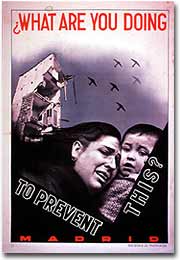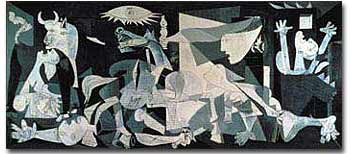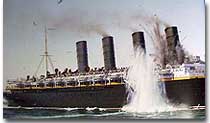50b. Reactions to a Troubled World

Volunteers from around the globe converged on Spain in the 1930s to help fend off a fascist uprising led by Francisco Franco. This poster, printed in Spanish, French, and English, is a plea for international support.
The day after Franklin Roosevelt took the oath of office the Nazi Reichstag gave Adolf Hitler absolute control of Germany. Hitler had campaigned spewing anti-Semitic rhetoric and vowing to rebuild a strong Germany.
During the week prior to FDR's inauguration, Japan withdrew from the League of Nations for the condemnation of Japanese aggressions in China. Fascism and militarism were spreading across Europe and East Asia. Meanwhile Americans were not bracing themselves for the coming war; they were determined to avoid it at all costs.
The first act of European aggression was not committed by Nazi Germany. Fascist dictator Benito Mussolini ordered the Italian army to invade Ethiopia in 1935. The League of Nations refused to act, despite the desperate pleas from Ethiopia's leader Haile Selassie.
The following year Hitler and Mussolini formed the Rome-Berlin Axis, an alliance so named because its leaders believed that the line that connected the two capitals would be the axis around which the entire world would revolve. Later in 1936, Hitler marched troops into the Rhineland of Germany, directly breaching the Treaty of Versailles, which was signed after World War I. A few months later, Fascist General Francisco Franco launched an attempt to overthrow the established Loyalist government of Spain. Franco received generous support from Hitler and Mussolini.

Pablo Picasso created this mural for display in the Spanish Pavilion at the 1937 World's Fair. Entitled "Guernica," it depicts the slaughter of over 1,600 Spanish civilians by fascist forces.
While Fascist aggressors were chalking up victories across Europe, America, Britain, and France sat on the sidelines. The desire to avoid repeating the mistakes of World War I was so strong, no government was willing to confront the dictators. Economic sanctions were unpopular during the height of the Great Depression. The Loyalists in Spain were already receiving aid from the Soviet Union; therefore, public opinion was against assisting Moscow in its "private" war against fascism. As the specter of dictatorship spread across Europe, the West feebly objected with light rebukes and economic penalties with no teeth.
The United States Congress and President Roosevelt passed three important laws — all called Neutrality Acts — directly aimed at reversing the mistakes made that led to the American entry into the First World War.The Neutrality Act of 1935 prohibited the shipping of arms to nations at war, including the victims of aggressions. This would reduce the possibility of maritime attacks on American vessels. A Senate Committee led by Gerald Nye had conducted extensive research on US activities prior to World War I concluded that trade and international finance had been the leading cause of American entry.

The Neutrality Act of 1936 was designed to keep American citizens out of peril by forbidding them to travel on the ships of warring nations. More than 100 Americans were killed when a German submarine torpedoed the Lusitania in 1915.
The Neutrality Act of 1936 renewed the law of the previous year with the additional restrictions — no loans could be made to belligerent nations. Nor were any Americans permitted to travel on the ships of nations at war. There would be no more Lusitania incidents.
A Neutrality Act of 1937 limited the trade of even non-munitions to belligerent nations to a "cash and carry basis." This meant that the nation in question would have to use its ships to transport goods to avoid American entanglements on the high seas. Isolationists in Congress felt reasonably confident that these measures would keep the United States out of another war.
But as the decade passed, President Roosevelt was growing increasingly skeptical.






